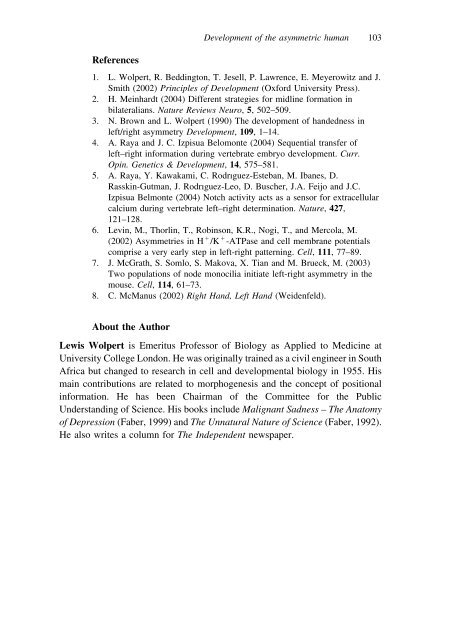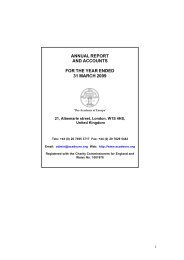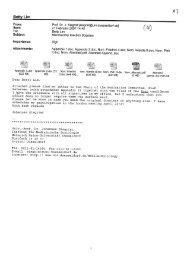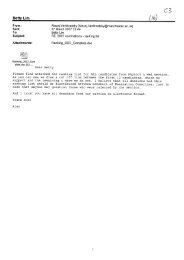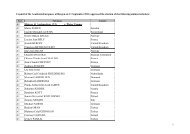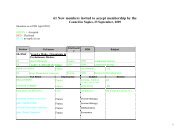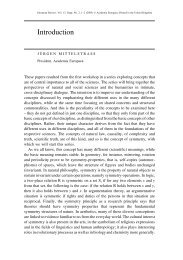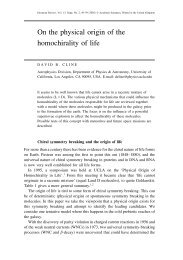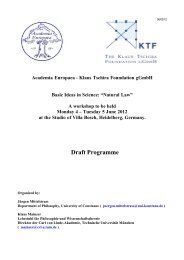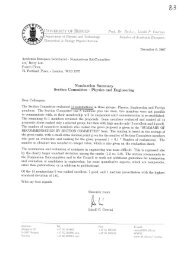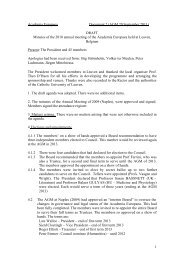Development of the asymmetric human - Academia Europaea
Development of the asymmetric human - Academia Europaea
Development of the asymmetric human - Academia Europaea
Create successful ePaper yourself
Turn your PDF publications into a flip-book with our unique Google optimized e-Paper software.
<strong>Development</strong> <strong>of</strong> <strong>the</strong> <strong>asymmetric</strong> <strong>human</strong>103References1. L. Wolpert, R. Beddington, T. Jesell, P. Lawrence, E. Meyerowitz and J.Smith (2002) Principles <strong>of</strong> <strong>Development</strong> (Oxford University Press).2. H. Meinhardt (2004) Different strategies for midline formation inbilateralians. Nature Reviews Neuro, 5, 502–509.3. N. Brown and L. Wolpert (1990) The development <strong>of</strong> handedness inleft/right asymmetry <strong>Development</strong>, 109, 1–14.4. A. Raya and J. C. Izpisua Belomonte (2004) Sequential transfer <strong>of</strong>left–right information during vertebrate embryo development. Curr.Opin. Genetics & <strong>Development</strong>, 14, 575–581.5. A. Raya, Y. Kawakami, C. Rodrıguez-Esteban, M. Ibanes, D.Rasskin-Gutman, J. Rodrıguez-Leo, D. Buscher, J.A. Feijo and J.C.Izpisua Belmonte (2004) Notch activity acts as a sensor for extracellularcalcium during vertebrate left–right determination. Nature, 427,121–128.6. Levin, M., Thorlin, T., Robinson, K.R., Nogi, T., and Mercola, M.(2002) Asymmetries in H /K -ATPase and cell membrane potentialscomprise a very early step in left-right patterning. Cell, 111, 77–89.7. J. McGrath, S. Somlo, S. Makova, X. Tian and M. Brueck, M. (2003)Two populations <strong>of</strong> node monocilia initiate left-right asymmetry in <strong>the</strong>mouse. Cell, 114, 61–73.8. C. McManus (2002) Right Hand, Left Hand (Weidenfeld).About <strong>the</strong> AuthorLewis Wolpert is Emeritus Pr<strong>of</strong>essor <strong>of</strong> Biology as Applied to Medicine atUniversity College London. He was originally trained as a civil engineer in SouthAfrica but changed to research in cell and developmental biology in 1955. Hismain contributions are related to morphogenesis and <strong>the</strong> concept <strong>of</strong> positionalinformation. He has been Chairman <strong>of</strong> <strong>the</strong> Committee for <strong>the</strong> PublicUnderstanding <strong>of</strong> Science. His books include Malignant Sadness – The Anatomy<strong>of</strong> Depression (Faber, 1999) and The Unnatural Nature <strong>of</strong> Science (Faber, 1992).He also writes a column for The Independent newspaper.


